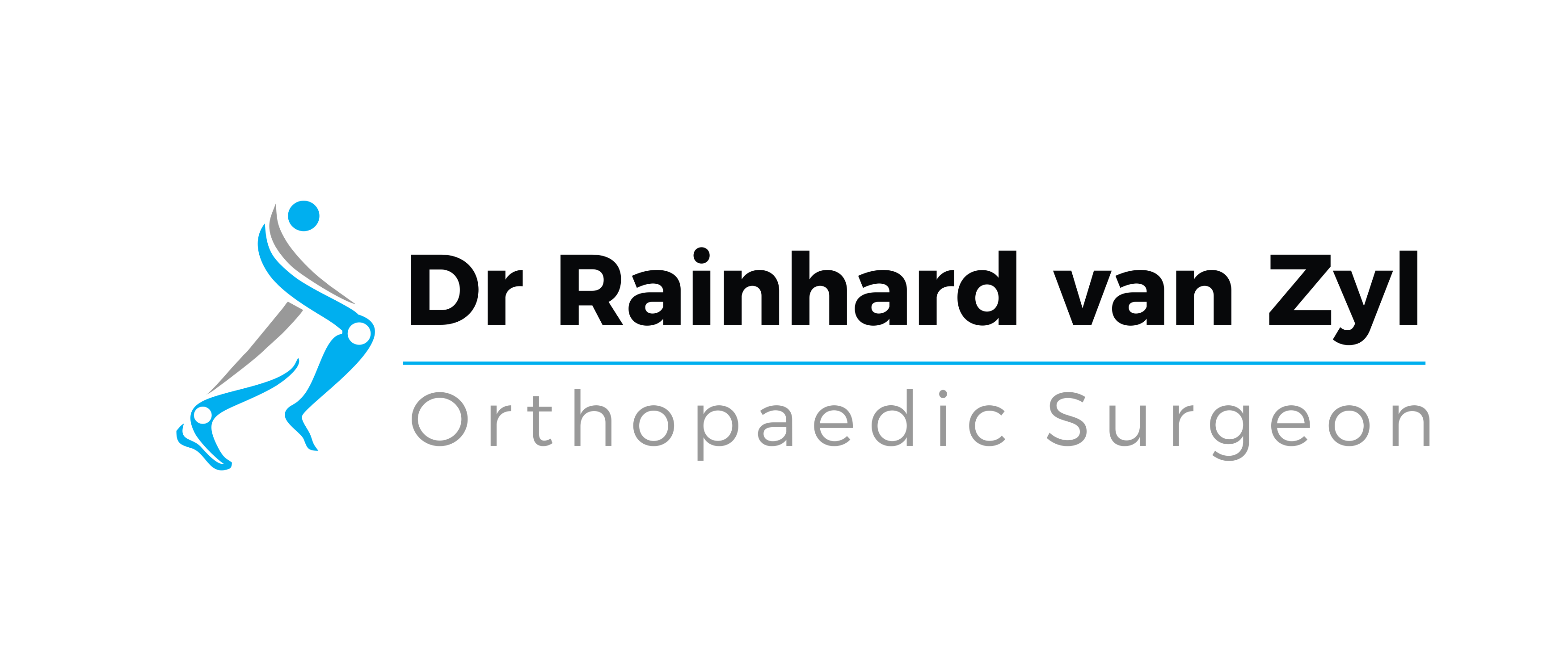A CAPE TOWN-BASED ORTHOPAEDIC SURGEON
Dr. Rainhard van Zyl is an AOA fellowship trained and recognised surgeon specialising in orthopaedic trauma and adult hip and knee surgery.
Hip Conditions
Hip Osteoarthritis
Hip arthritis is a condition where the cartilage of the hip joint wears out, leaving a rough surface which rubs during activity. This leads to inflammation and pain. It has a variety of causes, and gradually worsens over time. If untreated it can cause problems with walking, muscle weakness, stiffness and low back pain.
Hip - Avascular Necrosis/ Osteonecrosis
Osteonecrosis of the hip is a painful condition that occurs when the blood supply to the bone is disrupted. As bone cells die without a blood supply, osteonecrosis can ultimately lead to destruction of the hip joint and arthritis. Osteonecrosis is also called avascular necrosis or aseptic necrosis. Although it can occur in any bone, osteonecrosis most often affects the hip. In many cases, both hips are affected by the disease.
Adult Hip Dysplasia
Hip dysplasia is an abnormality in the hip joint. In people with this condition, the femur (thigh bone) does not fit together with the pelvis as it should.
Hip dysplasia can damage the cartilage, the tissue that cushions these bones in the joint. It can also cause pain and issues, ranging from an unstable joint to dislocation (the bone slides out of place in the joint).
Femoroacetabular Impingement (FAI)
Femoroacetabular impingement (FAI) is a condition in which extra bone develops along one or both of the bones that form the hip joint. Because they do not fit together perfectly, the bones rub against each other during movement. Over time this friction can damage the joint, causing pain and limiting activity.
Periprosthetic Fracture
Periprosthetic fracture is a term used to describe any fracture that occurs around an implanted orthopedic prosthesis, most commonly knee or hip arthroplasties.
Prosthetic Joint Infection
Prosthetic joint infection (PJI) remains one of the most serious complications of prosthetic joint implantation. The management of PJI almost always necessitates the need for surgical intervention and prolonged courses of intravenous or oral antimicrobial therapy.
Implant wear and loosening
Total joint replacement, although considered an excellent surgical procedure, can be complicated by osteolysis induced by implant particles and subsequent aseptic loosening of the implant.
Gluteal Tendon Tears
The gluteal tendons are the attachments of the powerful gluteal muscles to the femur bone. These can tear, which can cause hip pain, weakness, and limping.
Painful Hip Replacement
Hip replacements are generally highly successful operations, and provide excellent relief of pain, restoration of function and preservation of independence. However, problems can arise which can lead to pain, stiffness, limping, dislocation or instability.
If you are suffering from any of these symptoms and have a total hip replacement it is advisable to be reviewed by a Specialist Orthopaedic Surgeon with an interest in hip joint replacement surgery. There can be a wide variety of potential problems with your hip replacement which may be causing it to be painful, and it is important to ensure that it has been thoroughly investigated prior to undergoing treatment.
Hip Treatments
Posterior and Antero/Lateral Hip Replacement
Posterior total hip replacement has been the most common approach for total hip replacement for many years. In this approach, the patient is positioned on their side, and an incision is made down the side of the buttock. The incision is typically 15-20cm long, but this varies depending upon patient size and the type of hip replacement being undertaken.
Direct Anterior Hip Replacement Surgery
The anterior approach involves going between the muscles, rather than cutting them.
Hip Preservation
Hip preservation surgery is a new sub-specialty in Orthopaedics which utilises tried and tested techniques to preserve the native hip and prevent hip joint replacement. It commonly involves treatment of the consequences of childhood hip diseases.
Hip Revision Replacement
Occasionally problems may occur that require a surgical correction or “revision” of the hip replacement.

